
Renault Captur Engine Size

- Understanding the Renault Captur’s Engine Range
- Two Generations, One Big Question: Which Engine Sizes Are Offered?
- How Engine Size Affects Everyday Driving
- Comparing Renault Captur Petrol Engine Sizes
- Renault Captur Diesel Engine Sizes
- Hybrid Engine Size: Renault Captur E-Tech 1.6
- Engine Sizes by Generation: Quick Reference Tables
- Which Engine Size Is Right for You?
- Performance Differences You’ll Actually Notice
- Fuel Economy Impact of Engine Size
- Insurance Groups by Engine Size
- Maintenance Costs and Engine Size
- Engine Longevity: Which Size Lasts Longest?
- Towing Ability and Engine Size
- Real-World Owner Impressions
- Quick Buyer’s Guide Summary
- Conclusion: The Right Engine Size Makes the Right Captur
- FAQs
Understanding the Renault Captur’s Engine Range
When we talk about the Renault Captur, we’re talking about a compact crossover that punches above its weight. And like any good small SUV, its personality changes dramatically depending on the engine underneath. Engine size isn’t just a number on paper — it shapes how the Captur accelerates, how it drinks fuel, how it behaves in the city, and even how confidently it tackles long motorway drives.
In this guide, we take a relaxed, human approach to unpacking everything you need to know about Renault Captur engine sizes across generations, trims, and fuel types. Think of us as your co-driver, chatting casually through every twist and turn of the Captur’s engine lineup.
Two Generations, One Big Question: Which Engine Sizes Are Offered?
Renault has sold two main generations of the Captur:
First Generation (2013–2019)
This generation introduced a compact SUV with an engine lineup based mainly on small, efficient petrol and diesel options:
- 0.9 TCe (0.9-litre turbo petrol)
- 1.2 TCe (1.2-litre turbo petrol)
- 1.3 TCe (1.3-litre turbo petrol – late model)
- 1.5 dCi (1.5-litre turbo diesel)
Second Generation (2020–Present)
The current Captur broadened the powertrain horizons by adding hybrid and plug-in hybrid technology:
- 1.0 TCe (1.0-litre turbo petrol)
- 1.3 TCe (1.3-litre turbo petrol)
- 1.6 E-Tech (1.6-litre hybrid and PHEV)
This variety makes the Captur one of the most flexible small SUVs in the market — almost like picking a pair of shoes for the occasion. Need something efficient? There’s a pair. Want something punchier? There’s another. Want to go electric-leaning? Still covered.
How Engine Size Affects Everyday Driving
No matter how casual you are about cars, engine size changes the experience. Let’s make it simple:
Smaller Engines (0.9L – 1.0L)
Think of these as nimble joggers. Not blisteringly fast, but agile, economical, and very happy in tight city environments.
Mid-Size Petrol Engines (1.2L – 1.3L)
These are the all-rounders: lively on the motorway, flexible in daily driving, and still reasonably efficient.
Larger or Electrified Engines (1.5L – 1.6L Hybrid/PHEV)
These feel like someone handed the Captur a set of light weights to build muscle — more torque, more smoothness, more long-journey comfort.
Comparing Renault Captur Petrol Engine Sizes
0.9 TCe (0.9-Litre Turbo Petrol)
- Power: Around 90hp
- Driving Feel: Light, responsive at low speeds
- Best For: Pure city driving, first-time drivers, light commutes
- Pros: Great fuel economy, easy to manoeuvre
- Cons: Struggles on steep hills or when fully loaded
This engine is like a friendly terrier — small but energetic, ready for daily errands without complaint.
You may be interested in reading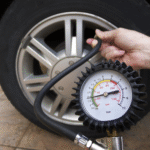 How to Reset Tyre Pressure on a Renault Captur: Complete TPMS Reset & Warning Light Guide
How to Reset Tyre Pressure on a Renault Captur: Complete TPMS Reset & Warning Light Guide1.0 TCe (1.0-Litre Turbo Petrol)
- Power: 90–100hp depending on tuning
- Driving Feel: More refined than the old 0.9 TCe
- Best For: Urban drivers who want a modern, slightly more grown-up unit
- Pros: Smoother power delivery, better emissions
- Cons: Still feels stretched at motorway speeds
If the 0.9 TCe was a terrier, this is the terrier with manners — still lively, but trained.
1.2 TCe (1.2-Litre Turbo Petrol)
- Power: 120hp
- Driving Feel: Flexible, confident on open roads
- Best For: Drivers wanting a bit more punch
- Pros: Strong acceleration, pleasant for long journeys
- Cons: Older versions had injector and timing chain concerns
Picture the 1.2 TCe as the Captur’s “teenager entering adulthood” moment — more power, more maturity, but with a few early-life quirks.
1.3 TCe (1.3-Litre Turbo Petrol)
- Power: 130–155hp depending on trim
- Driving Feel: The sweet spot between performance and efficiency
- Best For: Drivers who want the best petrol experience
- Pros: Strong torque, refined, versatile
- Cons: Slightly higher insurance and running costs
This engine feels like the Captur is suddenly wearing running shoes instead of loafers — ready for real movement.
Renault Captur Diesel Engine Sizes
1.5 dCi (1.5-Litre Diesel)
- Power: 90–115hp depending on generation
- Driving Feel: Torquey, relaxed
- Best For: High-mileage drivers, country roads
- Pros: Excellent economy, very durable
- Cons: DPF issues if not taken on regular longer runs
Like a long-distance cyclist, the 1.5 dCi loves steady progress — and rewards you with impressive fuel savings.
Hybrid Engine Size: Renault Captur E-Tech 1.6
The E-Tech lineup uses a 1.6-litre petrol engine paired with electric motors.
1.6 E-Tech Hybrid (Non-Plug-in)
- Power: Around 145hp
- Driving Feel: Smooth, whisper-quiet in EV mode
- Best For: City + motorway blend
- Pros: Excellent real-world economy
- Cons: Boot space slightly reduced
1.6 E-Tech Plug-In Hybrid (PHEV)
- Power: 160hp
- Electric Range: Up to 30 miles
- Best For: Drivers who can charge at home
- Pros: Almost EV-like around town
- Cons: Heavier, more expensive
If you imagine the standard 1.6 Hybrid as a comfortable couch, the PHEV is the couch with massage mode — same feeling, but better tech.
Engine Sizes by Generation: Quick Reference Tables
Petrol Engines
| Engine Size | Power Output | Years Available | Notes |
|---|---|---|---|
| 0.9 TCe | ~90hp | 2013–2019 | Best for towns |
| 1.0 TCe | 90–100hp | 2020–Present | Modern, efficient |
| 1.2 TCe | 120hp | 2013–2018 | Strong but some reliability concerns |
| 1.3 TCe | 130–155hp | 2019–Present | Best performance option |
Diesel Engines
| Engine Size | Power | Best For |
|---|---|---|
| 1.5 dCi | 90–115hp | High mileages, rural driving |
Hybrid Engines
| Engine Size | Type | Power | Key Benefit |
|---|---|---|---|
| 1.6 E-Tech | Hybrid | 145hp | Low running costs |
| 1.6 E-Tech | Plug-In Hybrid | 160hp | EV-like efficiency |
Which Engine Size Is Right for You?
Choosing a Renault Captur engine size feels a bit like choosing a holiday — city break, countryside escape, or power-packed adventure?
Choose Smaller Engines If…
- Most of your driving is in cities
- You want low running costs
- You rarely carry heavy loads
Choose Mid-Size Petrol Engines If…
- You want the best blend of power and affordability
- You drive on motorways often
- You like a smoother, more punchy feel
Choose Diesel if…
- You cover 12,000+ miles annually
- You want the best long-distance economy
Choose Hybrid or PHEV if…
- You commute daily in traffic
- You can charge at home (PHEV)
- You want the most modern setup
Performance Differences You’ll Actually Notice
Most people don’t live their lives measuring 0–60 times. But you WILL feel:
- Turbo lag differences between smaller engines
- Extra torque from the 1.5 dCi and 1.3 TCe
- Smooth silent launches in the hybrid models
- Weight differences in the plug-in hybrid
It’s like comparing a feather, a paperback, and a hardback — they’re all books, but each feels different in your hand.
Fuel Economy Impact of Engine Size
Engine size strongly influences MPG.
Small Engines
- 45–55 MPG in most cases
- Best for short trips
1.3 TCe
- 40–48 MPG
- Good balance of power and economy
1.5 dCi
- 60–70 MPG
- The economy king
Hybrid Models
- 55–65 MPG real-world
- PHEV: 200+ MPG possible with short electric-heavy trips
Insurance Groups by Engine Size
Bigger engines typically mean higher insurance groups.
You may be interested in reading How to Reset Tyre Pressure on a Renault Captur: Complete TPMS Reset & Warning Light Guide
How to Reset Tyre Pressure on a Renault Captur: Complete TPMS Reset & Warning Light Guide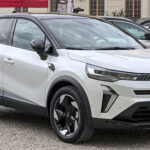 Renault Captur Tyre Size Guide (2013–2018): Complete Wheel & Tyre Fitment Chart
Renault Captur Tyre Size Guide (2013–2018): Complete Wheel & Tyre Fitment ChartLower Insurance (Good for New Drivers)
- 0.9 TCe
- 1.0 TCe
Moderate Insurance
- 1.2 TCe
- 1.5 dCi
Higher Insurance
- 1.3 TCe
- Hybrid models (due to cost of components)
Maintenance Costs and Engine Size
Engine size also affects repair costs.
Smaller Engines
- Cheaper servicing
- Less oil
- Fewer complications
Mid/Large Engines
- More expensive spark plugs
- More complex turbos
- Hybrids require specialised servicing
Engine Longevity: Which Size Lasts Longest?
In real-world use:
- 1.5 dCi engines often surpass 200,000 miles with proper care
- 1.3 TCe is proving durable and modern
- E-Tech Hybrid benefits from reduced engine stress
- 0.9 TCe can last, but needs consistent maintenance
Towing Ability and Engine Size
If you plan to tow small trailers or bikes:
- 1.3 TCe: Best petrol option
- 1.5 dCi: Best torque
- 1.6 E-Tech: Limited for towing in hybrid mode
Real-World Owner Impressions
Drivers often describe smaller engines as “nippy but breathless,” mid-size petrols as “comfortably brisk,” and hybrids as “serene and surprisingly quick in town.”
It’s like tasting coffee strength levels — mild, medium, strong — and picking your favourite cup.
Quick Buyer’s Guide Summary
- Best all-rounder: 1.3 TCe
- Best for cities: 1.0 TCe
- Best for efficiency: 1.5 dCi
- Best for low emissions: 1.6 E-Tech Hybrid
- Best performance: 1.3 TCe 155hp
Conclusion: The Right Engine Size Makes the Right Captur
The Renault Captur’s magic lies in its versatility. Whether you crave urban agility, motorway confidence, hybrid smoothness, or diesel endurance, there’s an engine size tailored for your lifestyle. Choosing the right one will make every drive feel like slipping into a jacket that fits just right — reliable, comfortable, and effortlessly stylish.
FAQs
1. What is the most powerful Renault Captur engine size?
The 1.3 TCe 155hp is the strongest petrol engine, while the 1.6 E-Tech Plug-In Hybrid edges it with 160hp in combined output.
2. Which Captur engine offers the best fuel economy?
The 1.5 dCi diesel delivers the best long-distance efficiency, while the E-Tech PHEV offers exceptional economy on short commutes.
3. Is the 0.9 TCe engine underpowered?
It’s perfect for town driving but may feel strained on motorways with passengers or luggage.
4. Does engine size affect insurance on the Captur?
Yes — smaller engines like the 1.0 TCe usually fall into lower insurance groups.
5. What engine size is best for UK driving?
The 1.3 TCe 130hp is often considered the ideal balance for the UK, offering power, refinement, and reasonable running costs.
You may be interested in reading How to Reset Tyre Pressure on a Renault Captur: Complete TPMS Reset & Warning Light Guide
How to Reset Tyre Pressure on a Renault Captur: Complete TPMS Reset & Warning Light Guide Renault Captur Tyre Size Guide (2013–2018): Complete Wheel & Tyre Fitment Chart
Renault Captur Tyre Size Guide (2013–2018): Complete Wheel & Tyre Fitment Chart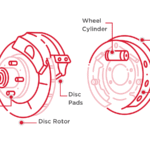 Braking System Fault on Renault: Full Diagnostic, Causes, and Fix Guide
Braking System Fault on Renault: Full Diagnostic, Causes, and Fix GuideIf you want to know other articles similar to Renault Captur Engine Size you can visit the category Service and Parts.
Deja una respuesta

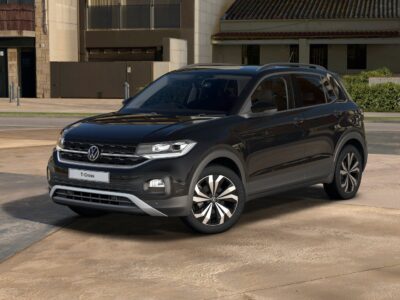

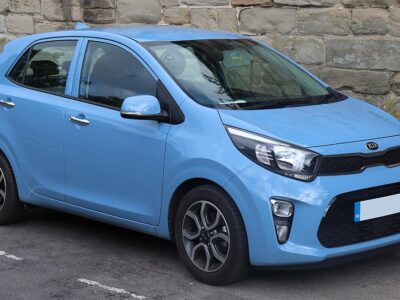
More content of your interest